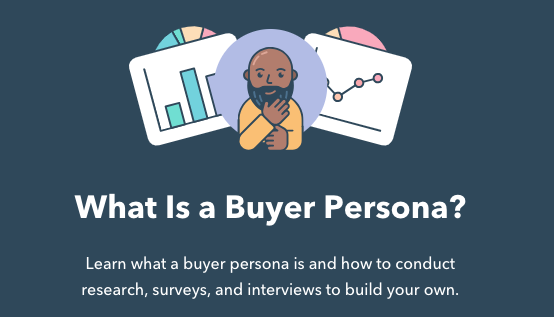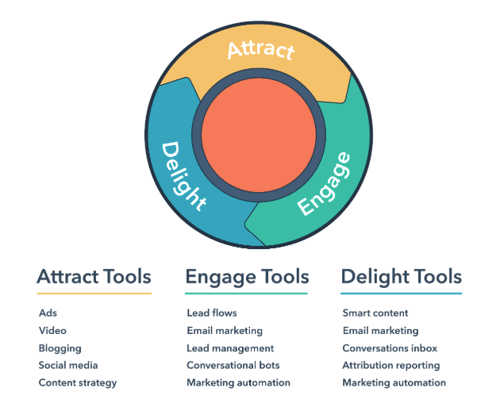6 Steps to a Successful Agency Partnership

Whether you own a business or work for a great one, the notion of partnering with an agency to help grow your business more quickly has likely - at the very least - crossed your mind. Maybe you’ve realized a gap in your team’s capabilities. Maybe you want your marketing and sales efforts to move faster. Or maybe you’ve decided it’s time to rethink your lead generation and client acquisition strategies altogether, but don’t know where to start.
Agency relationships can be a great way to supplement your team and grow your business. By planning ahead and preparing for an agency engagement, you’ll increase the likelihood of a positive experience and positive return on your investment.
Having founded Brightlark nearly 13 years ago, I’ve found the best partnerships we’ve had to be with those businesses who were prepared to engage. Below are what I believe to be the 6 most important steps you can take to ready yourself for an agency partnership and position yourself for long term success:
1. Define your target buyer personas
A buyer persona is simply a fictional representation of your ideal customer, based on real and researched data. Buyer personas are an important element to any growth campaign because they bring focus and clarity to your efforts. If you truly understand who your persona(s) are, what they care about and what they’re trying to achieve, you should structure your sales and marketing efforts around the engagement of that person.
I recommend using this free Make My Persona tool from HubSpot to learn more and build out your very own buyer personas.
2. Establish your key performance indicators (KPI's) and set desired outcomes for the agency partnership
KPI's are the specific metrics you track on a regular basis to ensure you are trending towards your company goals. Examples of KPI’s that Brightlark tracks on a weekly basis are:
- Traffic to lead ratio
- Lead to marketing qualified lead ratio
- Marketing qualified lead to sales qualified lead ratio
- Sales qualified lead to closed won ratio
If you can identify metrics you literally could not live without, you’ve likely identified your KPI’s.
After identifying your KPI’s, step two is to set KPI goals for your business and your agency. The more clarity you can give your agency in terms of what you expect out the relationship, the better. Tell them exactly what you expect, by when, and I assure you the agency will focus 100% of their efforts on achieving those objectives
3. Develop your digital growth IQ
Like any relationship, the more effectively you and your agency can communicate, the better your odds of success become.
We don’t expect our partners to know and understand the intricacies of SEO. That’s our job. We do, however, find it incredibly valuable when our partners understand what SEO is, and how it can add value to their business. By simply having a foundational understanding of the services your agency will be providing, and how those services are helping to grow your business, we’ve found the depth and value of our conversations to increase significantly.
A great resource to start building a foundation is this resource explaining inbound marketing. This article covers everything a growth agency should be providing to help a business be prosperous. To this point, any agency should be willing to provide a little ongoing education to elevate your understanding of the work being provided.
4. Maintain a segmented list of all business contacts
The most valuable list your business will ever own is the list of current and prospective clients. Our recommendation is to manage these contacts in a customer relationship management (CRM) system for improved organization and communication capabilities.
You’d be amazed at how many sizable companies still rely on notepads or spreadsheets to track leads and customers. If this happens to be you, please take our advice and get yourself a free CRM from HubSpot.
Sticky notes get lost. Spreadsheets crash. Maintaining your list of contacts in an online database, accessible anywhere, anytime is one of the smartest moves you can make for your business.
By maintaining a segmented list of contacts, by product purchased, lead source, geography, or any other data point you wish to track, you can more effectively communicate with these people by email or social media. For example, if you know a certain subset of your leads has shown an interest in your ACME water bottle, you can segment out and email that specific list of contacts more information about your water bottles. The content will be relevant and will increase the odds of contact re-engagement and sales conversion.
5. Prepare to invest time in this relationship
You are busy, we agencies get it. This is partially the reason you decided to seek out an agency engagement in the first place. While an agency won’t ask for hours of your time each day, they aren’t a set it and forget it type of relationship either.
On a regular basis agencies are delivering strategic suggestions, content, graphics, reports, etc., and we need and want your feedback and approval. Additionally, we will likely ask for 30 - 60 minutes of your time each week to discuss what’s working in your campaign, what isn’t, and what the plan going forward is going to look like.
In our experience, the relationships that have planned on devoting 1 - 2 hours of time and energy per week into the partnership have been the most successful. In those rare occasions, when the communication is inconsistent and we operate largely in a vacuum, the relationship suffers and the the engagement often fails.
My last thought here is that you need to have patience. Give this relationship time to develop and for results to scale. While expectations should have been agreed upon in step 2 above, it’s unrealistic to think your business will change in a week or even a month. Depending on the strategy, some tactics might provide some smaller quick wins, but the overall campaign can realistically take 6 - 9 months to mature and provide the value you’re wanting.
6. Prepare to invest money in this relationship
Every business has a budget and any good agency should respect this budget at all times. This said, if you set your budget too low, and underinvest, you are simply choosing to save money at the expense of limiting your business growth.
To figure a ballpark of what you should expect to invest, you’ll first want to calculate two metrics:
- Lifetime Value (LTV)
- Marketing Customer Acquisition Cost (MCAC)
LTV is the estimated revenue that an average customer will generate during the entire span of their relationship with you. A simple formula you can use to determine this metric is:
- Average value of a sale x average number of lifetime sales x gross margin = LTV
- Ex: $1,500 average sale price x 24 months x 15% = $5,400 LTV
MCAC is total marketing cost (both program and people) divided by the number of customers acquired over a specified period of time (a month, quarter or year). You can use this formula to calculate your MCAC:
- Marketing costs / customers acquired = MCAC
- Ex: $100,000 total marketing costs / 25 customers acquired = $4,000 MCAC
If you don’t have historical data to determine either of the above metrics, don’t worry. A rough ballpark or educated guess should be sufficient and certainly better than nothing.
With the above metrics figured, you can project a rough estimate of what you should be prepared to invest by following the formula below:
- Average customers acquired each month x (the greater of) 10% of LTV or MCAC = projected investment
- Ex: 6 customers acquired x $3,240 (6*(10%*$5,400) or $4,000
If you want to maintain your current growth rate, but slow your growth investments LTV may be the way to go. In essence, you’re simply agreeing to invest $1 in growth strategies with the expectation that they’ll generate $10 over that customer's lifetime.
MCAC might be a better metric to use if you aren’t as concerned about saving and instead want to focus looking to save on accelerating growth.
In the example above, if you typically acquire 6 customers per month, the appropriate level of spend to grow your business is either the greater of 10% of LTV or MCAC. In this case, MCAC is greater bringing the suggested investment to roughly $4,000 per month, to effectively grow your business.
Choosing an agency to help in the growth of your business can be one of the smartest decisions you make, but it’s a decision that shouldn’t be taken lightly. It’s a decision that takes planning and preparation to be successful, which is what both parties ultimately want. As an agency owner, I can tell you that absolutely nothing feels better than to watch your strategic decisions impact the lives and bottom lines of others in a hugely positive way.
Ready to talk about an agency partnership? Schedule a free marketing consultation and let's talk about how we can expand your reach and grow your business.

March 18, 2019


